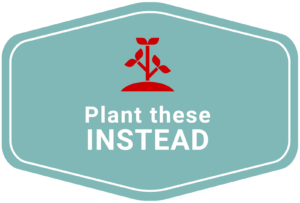Plant These Instead Videos
go.ncsu.edu/readext?851803
en Español / em Português
El inglés es el idioma de control de esta página. En la medida en que haya algún conflicto entre la traducción al inglés y la traducción, el inglés prevalece.
Al hacer clic en el enlace de traducción se activa un servicio de traducción gratuito para convertir la página al español. Al igual que con cualquier traducción por Internet, la conversión no es sensible al contexto y puede que no traduzca el texto en su significado original. NC State Extension no garantiza la exactitud del texto traducido. Por favor, tenga en cuenta que algunas aplicaciones y/o servicios pueden no funcionar como se espera cuando se traducen.
Português
Inglês é o idioma de controle desta página. Na medida que haja algum conflito entre o texto original em Inglês e a tradução, o Inglês prevalece.
Ao clicar no link de tradução, um serviço gratuito de tradução será ativado para converter a página para o Português. Como em qualquer tradução pela internet, a conversão não é sensivel ao contexto e pode não ocorrer a tradução para o significado orginal. O serviço de Extensão da Carolina do Norte (NC State Extension) não garante a exatidão do texto traduzido. Por favor, observe que algumas funções ou serviços podem não funcionar como esperado após a tradução.
English
English is the controlling language of this page. To the extent there is any conflict between the English text and the translation, English controls.
Clicking on the translation link activates a free translation service to convert the page to Spanish. As with any Internet translation, the conversion is not context-sensitive and may not translate the text to its original meaning. NC State Extension does not guarantee the accuracy of the translated text. Please note that some applications and/or services may not function as expected when translated.
Collapse ▲Grow Smarter – Plant These Instead!
Grow a healthier, more environmentally responsible landscape by avoiding invasive or problem-prone species that are commonly planted in NC landscapes. Watch the recordings below to discover problem-prone plants commonly planted in southern landscapes and more resilient alternatives you should plant instead.
PEST & DISEASE PRONE PLANTS
AZALEAS, Rhododendron hybrids | View slides
BOXWOOD, Buxus species and varieties | View slides
DOGWOOD, Cornus florida | View slides
GENOVESE BASIL, Ocimum basilicum ‘Genovese’ | View slides
LEYLAND CYPRESS, x Hesperotropsis leylandii | View slides
ROSES, Rosa hybrids and cultivars | View slides
TOMATOES, Solanum lycopersicum | View slides
INVASIVE SPECIES
BRADFORD PEAR, Pyrus calleryana | View slides
BURNING BUSH, Euonymus alatus | View slides
ENGLISH IVY, Hedera helix | View slides
JAPANESE HONEYSUCKLE, Lonicera japonica | View slides
LACEBARK ELM, Ulmus parvifolia | View slides
MAIDEN GRASS, Miscanthus sinensis | View slides
PRIVET, Ligustrum species | View slides
YELLOW FLAG IRIS, Iris pseudacorus | View slides
Visit the Extension Gardener Plant Toolbox to learn more about over 4,600 plants that grow in and around North Carolina. Use the Find a Plant tool to discover the best varieties for your yard!
Plant These Instead was originally produced as part of the Plants, Pests and Pathogens webinar series. Visit the Plant These Instead slide archive.
Funding for this series was provided in part by a grant from the United States Department of Agriculture (USDA) – National Institute of Food and Agriculture (NIFA) (2021-70006-35670), administered through The National Science Foundation Center for Integrated Pest Management (CIPM).



